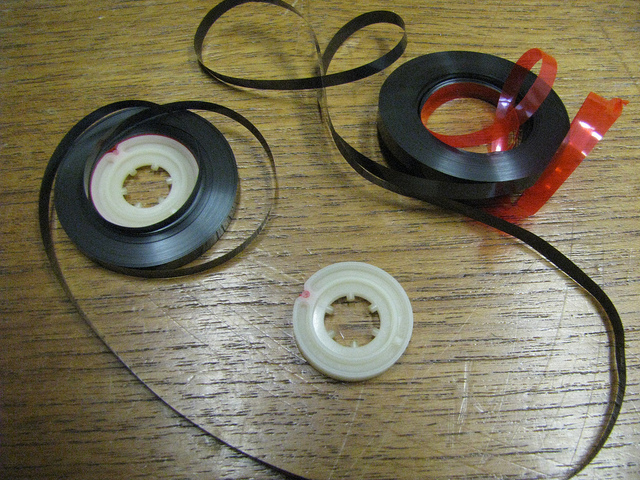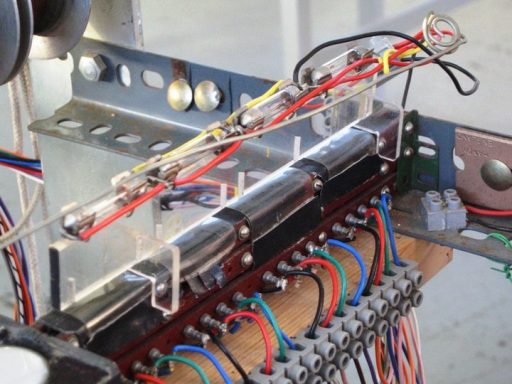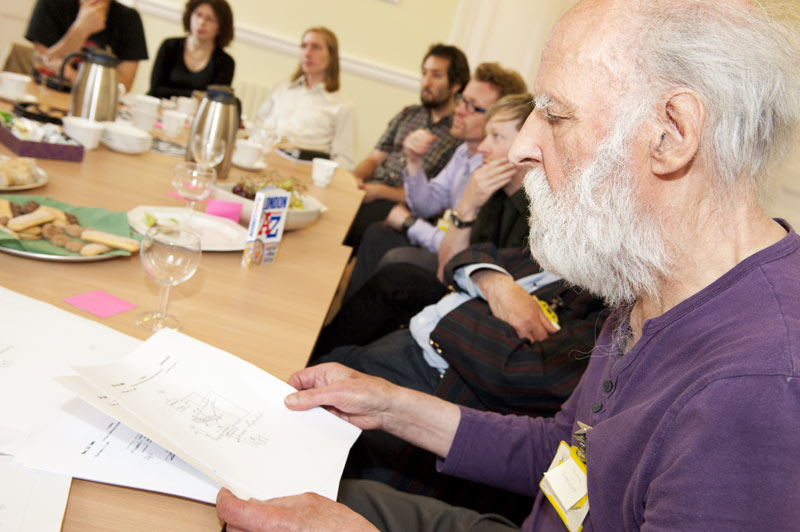
In the days before synthesisers, open source software and pirated soft-synths, electronic music pioneers had very few resources to create new and exciting sounds…

In the days before synthesisers, open source software and pirated soft-synths, electronic music pioneers had very few resources to create new and exciting sounds…
This article was written by Ellie West-Thomas, Research Assistant for Electronic Music. Whilst exploring the Science Museum’s Stores at Blythe House, I came across something rather unusual. Being classically trained in music and music theory I have had to write a score and use musical notations on many occasions, but I never knew that a typewriter could be used to write sheet music. The Musicgraph or Musikriter, was invented by Lily Pavey, patented in 1961 and completed in 1963. Pavey was the […]

On 10 October 2011, the Science Museum opened the exhibition Oramics to Electronica: Revealing Histories of Electronic Music.
Tape-players and tape-recorders were perhaps the most important instruments for many of electronic music’s pioneers, and for the staff of the BBC Radiophonic Workshop in particular. With few electronic instruments existing, early sonic explorers were forced to adapt and abuse existing technologies, and practices such as tape-splicing soon became vital tools in the search for new sounds. Since then, the situation has changed dramatically for most musicians and electronic instruments and equipment have become ever more accessible and affordable. Or […]
Last time we looked at a curious fire-powered organ invented by Strasbourg’s Fréderic Kastner in 1873. The instrument wasn’t a great success, but Kastner’s family connections brought it a certain amount of acknowledgement. While he “was not a distinguished physicist …he had a rich and influential mother who, it has been said, encouraged him in the development of the pyrophone in order to provide him with an occupation that would keep him out of mischief”. Amongst Mme Kastner’s acquaintances was […]
The 14 February 1876 is a very significant date in the history of the telephone. On that day both Alexander Graham Bell and Elisha Gray filed papers with the US Patent Office for a working telephone. Following a dispute Bell’s patent was granted and published on the 7th of March 1876. Recently some historians have suggested that the dispute may have been resolved so quickly because Bell found a way to incorporate some of Gray’s ideas into his patent applications – but what could […]
There’s more to the relationship between fire and music than simply bad metaphors and innuendos, as I learnt this week at Blythe House. In a dark corner of the Science Museum’s storage facility sits a small, awkward-looking wooden box with intriguing glass pipes sprouting out of it. However, this unassuming little object just so happens to be one of the world’s last remaining pyrophones, an instrument which, as the name suggests, combines fire and sound! Patented by the Strasbourg-born musician and scientist Fréderic […]
Recently, one of my colleagues sent me this link to a small synthesizer hidden in a book. The synthesiser is a bought piece of equipment, but it’s designed to be hacked and modified by whoever uses it and this particular owner probably had a good reason to keep it hidden. Or he just thought it would be fun to stick a synth in an old book. Either way, this quirky instrument instantly reminded me of one of the objects in […]

While researching our new exhibition about the history of electronic music, we had the amazing opportunity to meet a few of the people who were there making music in the 1960s and 70s, when futuristic electronic sounds were being experimented with for the very first time.

The Oramics Machine is being installed in the gallery today in preparation for tomorrow’s big opening…

Would you like to co-create an exhibit in our new temporary exhibition together with other musicians and curators from the Science Museum? Then drop us a line before 30 May (noon) and let us know why you love electronic music.
“We have also sound-houses, where we practise and demonstrate all sounds, and their generation. We have harmonies which you have not, of quarter-sounds, and lesser slides of sounds. Divers instruments of music likewise to you unknown, some sweeter than any you have, together with bells and rings that are dainty and sweet…” Daphne Oram, founder of the BBC Radiophonic Workshop, returned time and again to this quotation from Francis Bacon’s 17th century fantasy, The New Atlantis. Now, with help from […]